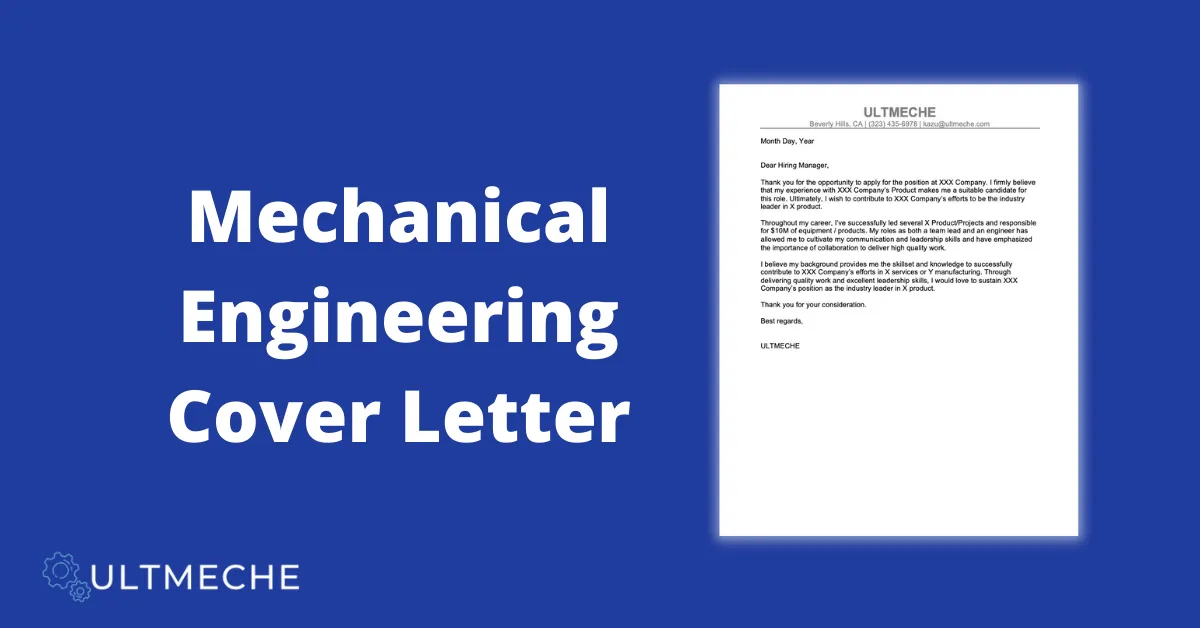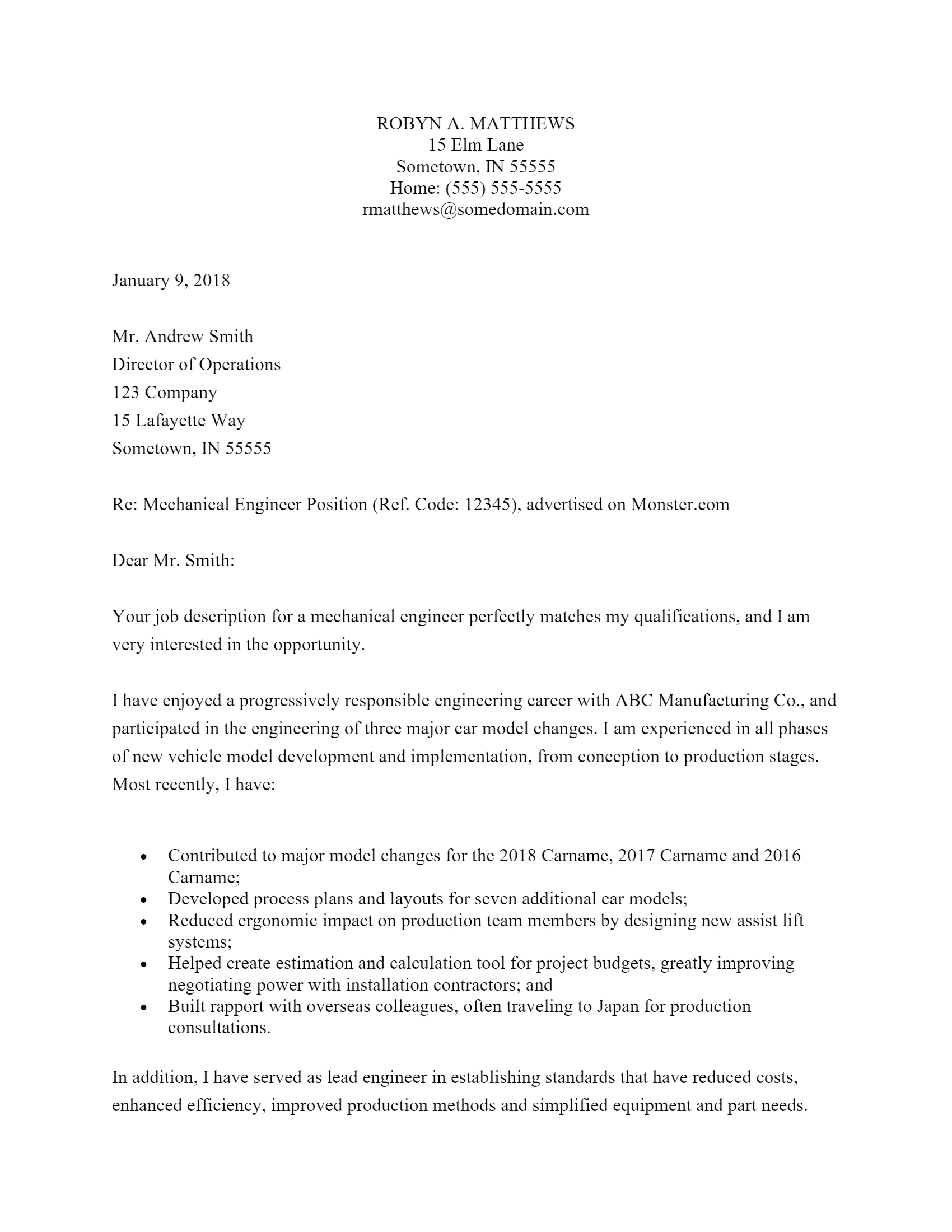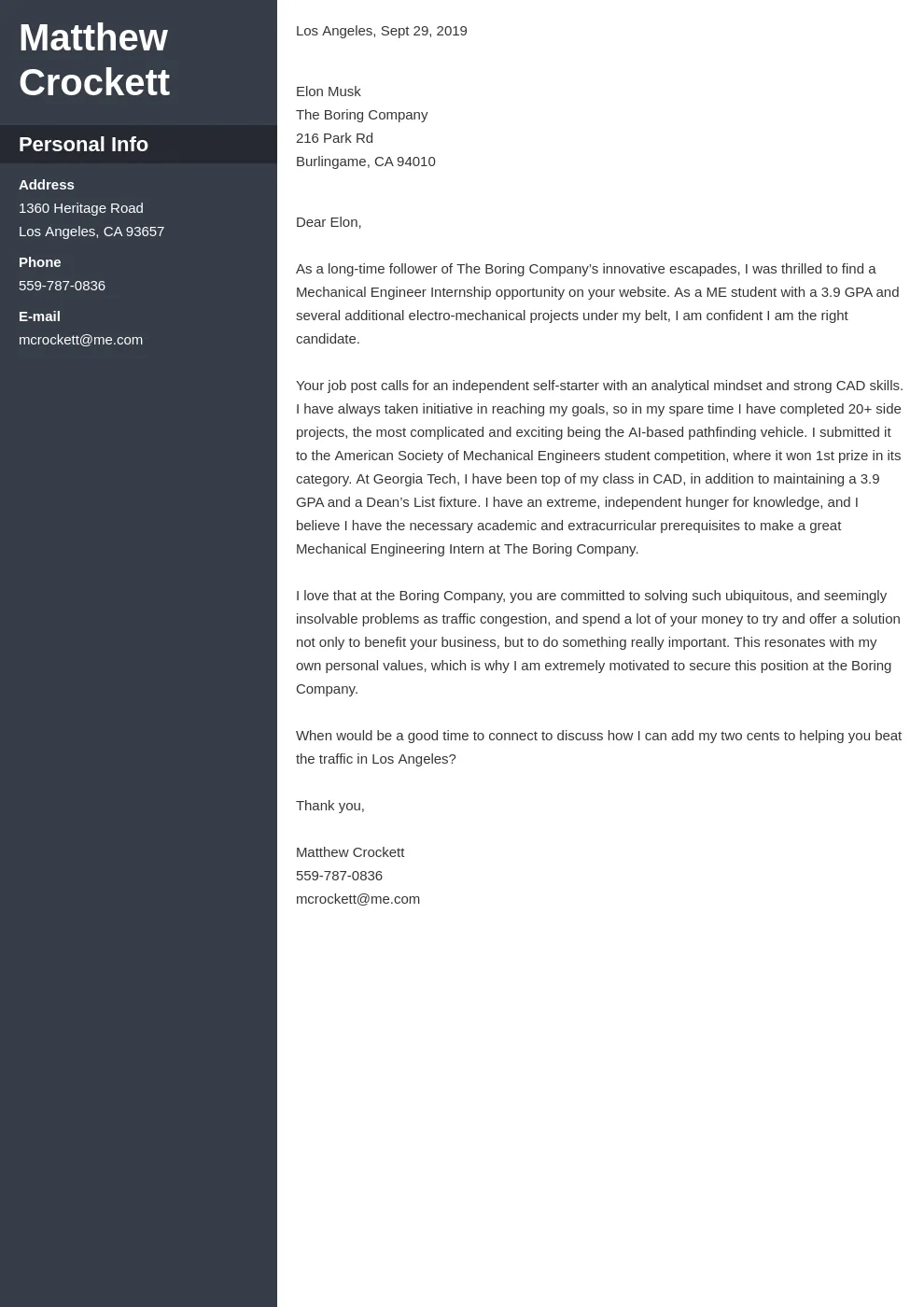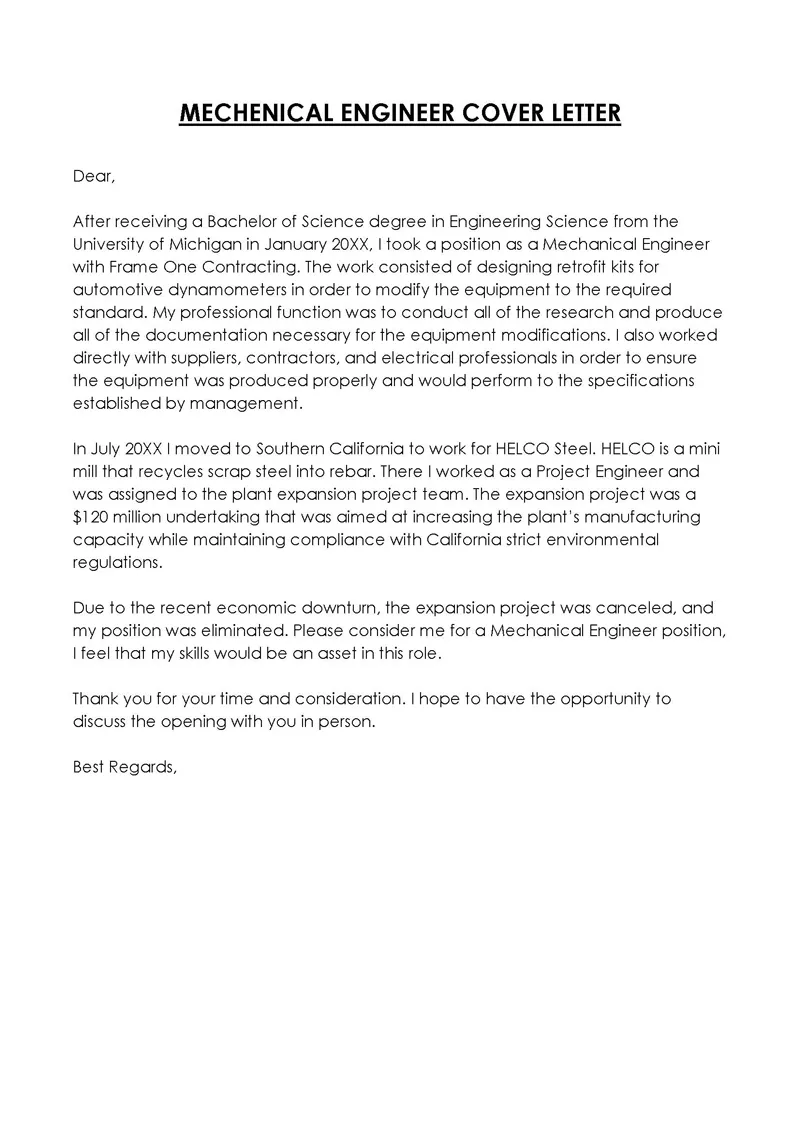Mechanical Engineer Cover Letter How-To
A well-crafted cover letter is a crucial tool for mechanical engineers seeking employment. It’s your first introduction to a potential employer, offering a chance to showcase your skills, experience, and personality beyond the confines of a resume. This guide will provide you with a comprehensive understanding of how to create a compelling cover letter that captures attention and increases your chances of landing an interview. We’ll delve into the essential components, offer practical tips, and provide insights to help you stand out from the competition. Remember, the cover letter is not just a formality it’s your opportunity to make a memorable impression.
Understanding the Purpose of a Mechanical Engineer Cover Letter
The primary purpose of a mechanical engineer cover letter is to introduce yourself and highlight your qualifications in a way that complements your resume. It’s a chance to tell your story and demonstrate how your skills and experience align with the specific requirements of the job. Unlike your resume, the cover letter allows you to express your personality, enthusiasm, and career goals. It allows you to expand on experiences and skills, providing context and showing how you’ve applied your knowledge in real-world scenarios. It’s also an excellent opportunity to address any potential gaps in your resume or to explain why you’re a perfect fit for the role.
Key Components of a Successful Cover Letter

A successful cover letter for a mechanical engineer includes several key elements. Firstly, a clear and concise introduction that immediately grabs the reader’s attention. This should state the position you are applying for and where you found the job posting. Secondly, the body of the letter should highlight your relevant skills, experience, and accomplishments, using specific examples to demonstrate your capabilities. Thirdly, you need to tailor the letter to the specific job description, emphasizing the skills and qualifications that the employer is seeking. Finally, the letter should conclude with a strong closing statement, expressing your interest in the position and inviting the employer to contact you for an interview. Formatting and proofreading are also essential to demonstrate professionalism.
Contact Information and Salutation
Begin your cover letter by including your contact information, such as your name, address, phone number, and email address. This should be placed at the top of the letter, making it easy for the employer to reach you. Next, address the letter to the hiring manager or the specific person mentioned in the job posting. If the name is not provided, use a professional salutation such as “Dear Hiring Manager” or “Dear [Company Name] Hiring Team”. Avoid generic salutations like “To Whom It May Concern”, as these show a lack of effort. Ensure the salutation matches the overall tone of your cover letter, demonstrating respect and professionalism.
Highlighting Your Skills and Experience
The body of your cover letter is where you showcase your skills and experience. Focus on the skills that are most relevant to the job description. Mechanical engineers need to demonstrate a range of technical skills, including proficiency in CAD software (like SolidWorks or AutoCAD), knowledge of thermodynamics, fluid mechanics, and materials science, and experience with design, analysis, and testing. Provide specific examples of how you’ve applied these skills in previous roles or projects. Use action verbs to describe your accomplishments, such as “designed,” “analyzed,” “developed,” and “implemented.” Quantify your achievements whenever possible, providing concrete evidence of your capabilities and impact. Tailor the skills to match the job description keywords.
Quantifying Achievements

Quantifying your achievements is one of the most impactful ways to demonstrate your value to a potential employer. Instead of simply stating your responsibilities, use numbers and data to showcase your accomplishments. For example, instead of saying “Improved efficiency,” you could write “Improved production efficiency by 15% through process optimization.” If you were involved in a project, mention the project’s budget, the number of people involved, and your specific contributions. If you designed a new system, mention the increase in performance or cost savings achieved. Quantifiable results make your accomplishments more credible and memorable. It provides the employer with a clear understanding of your ability to deliver results and contribute to the company’s success.
Tailoring Your Cover Letter to the Job Description
A generic cover letter will not impress a hiring manager. Take the time to tailor each cover letter to the specific job description and the company. Carefully read the job posting and identify the key requirements and qualifications that the employer is seeking. Then, structure your cover letter to address these requirements directly. Highlight the skills and experiences that are most relevant to the role. Use keywords from the job description throughout your letter to demonstrate that you understand the requirements. Research the company and demonstrate your knowledge of their products, services, and values. This demonstrates that you are genuinely interested in the position and have taken the time to understand the company’s needs. Mention specific projects or initiatives that align with the company’s goals.
Showcasing Relevant Projects
Mechanical engineers can significantly benefit from showcasing relevant projects in their cover letters. Detail projects where you applied your skills to solve a specific problem. Describe your role in the project, the challenges you faced, the solutions you implemented, and the results achieved. Include details such as the project’s scope, budget, and timeline. Mention any specific software, tools, or techniques you used. If possible, quantify your achievements. For example, if you designed a new product, mention any improvements in performance, efficiency, or cost savings. Showcasing relevant projects helps employers understand your capabilities and see how you can contribute to their company. Including these projects is especially valuable for entry-level engineers or those with limited professional experience. Make sure the projects are relevant to the target job.
Expressing Enthusiasm and Interest

Expressing your enthusiasm and genuine interest in the position is essential. Clearly state why you are excited about the opportunity and why you want to work for the company. Demonstrate your knowledge of the company’s mission, values, and products or services. Explain how your skills and experience align with the company’s goals and how you can contribute to its success. Mention any specific aspects of the job or the company that particularly interest you. This demonstrates that you’ve done your research and are not simply applying for any job. Use a positive and confident tone throughout the letter, and let your passion for mechanical engineering shine through.
Formatting and Proofreading Your Cover Letter
Proper formatting and proofreading are critical to making a professional impression. Use a clean, easy-to-read font such as Arial or Times New Roman. Maintain consistent formatting throughout the letter, including margins, spacing, and font size. Keep the letter concise, ideally no more than one page. Proofread your cover letter carefully for any grammatical errors, spelling mistakes, or typos. Ask a friend or colleague to review it as well, as a fresh pair of eyes can often catch errors that you may have missed. Ensure the letter is well-organized, with clear paragraphs and headings. A well-formatted and error-free cover letter demonstrates your attention to detail and professionalism, which are highly valued in mechanical engineering.
Closing Your Cover Letter
Conclude your cover letter with a strong closing statement. Thank the employer for their time and consideration. Reiterate your interest in the position and express your enthusiasm for the opportunity. Include a call to action, such as inviting the employer to contact you for an interview or indicating your availability for a discussion. Reiterate your contact information. Ensure that your closing is professional and polite. Sign off with a professional closing such as “Sincerely” or “Best regards.” A well-crafted closing statement leaves a positive lasting impression and increases your chances of getting a positive response.
